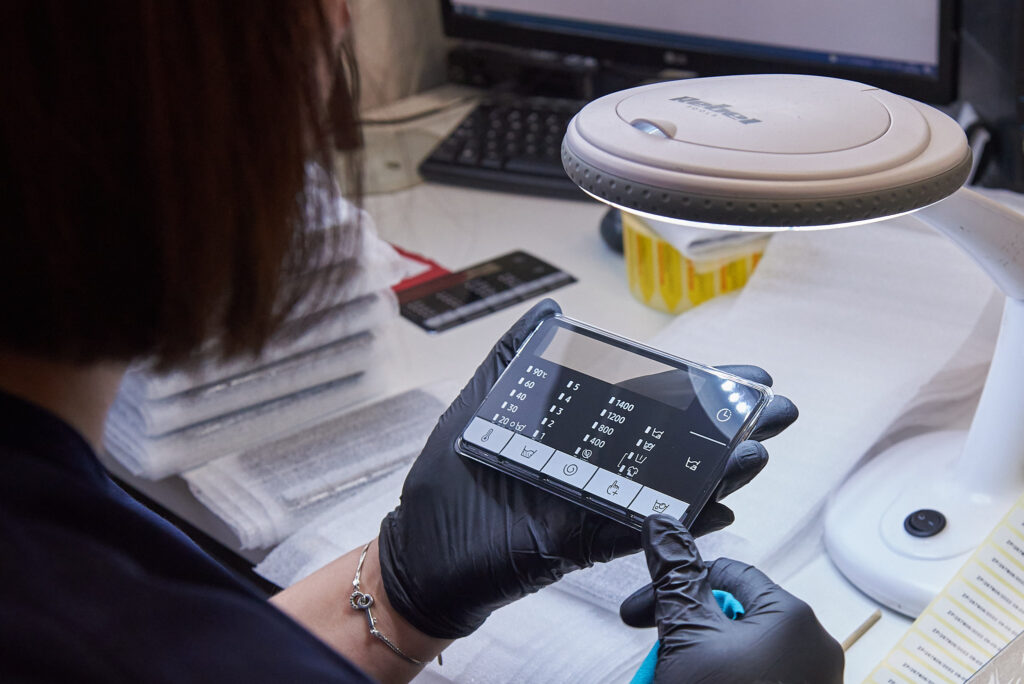
Screen printing in the audio/video devices and home appliance industries – part 2
In the first part of the article on screen printing focused primarily on faceplates and control panels. At the Etisoft Group, they constitute an important part of all products using the aforementioned screen printing technique. Now that we know what we can manufacture with screen printing, let’s focus on its technical aspects. In today’s article I will discuss:
- The ideal panel, or what to pay attention to already at the stage of graphic design,
- Advantages and limitations of screen printing.

The ideal panel, or what to pay attention to already at the stage of graphic design
When you want to use screen printing as a target manufacturing technique, it is worth looking at the design through the prism of simplicity and usability maximization. Why? Because screen printing is heavily dependent on, among other things, the number of colors needed to manufacture a particular piece. To facilitate several design and implementation stages that constitute an inherent element of bringing a new design into series production, it is necessary to take on board several factors related not only to selecting and testing injection molds, and to devote time to the graphic images visible on the panel.
From the user’s side, of course, the most significant factor will be the functionality and clarity of the panel, which directly influences the positive experience of using the target product, for instance, a washing machine equipped with the control panel. Inscriptions and pictograms should contrast appropriately with the background. Black and white is a great idea. Whereas the use of two shades of blue may effectively hinder everyday use. It is also worth paying attention to the typeface and clarity of the icons used in the design. A fancy font and an overly detailed image of spinning cause consternation as much as a poorly chosen color contrast. I mentioned earlier the important aspect of the number of colors in a single design. It is worth considering in advance the minimization of their number, which will have a positive impact on the unit cost of the panel. Each additional colour causes an increase in the number of necessary printing molds (screen printing mesh), which translates into over complication of the process and consequently also impacts on its price.

Advantages and limitations of screen printing
The principles mentioned in the previous section relating to graphic images are not only caused by esthetic issues. They are also directly related to the technology in which the control panels are printed, i.e., screen printing. Although this technology requires you to put some thought and incur production preparation costs, the benefits you obtain in return are certainly worth it.
The significant advantages of screen printing are:
- Print durability
- High color saturation
- Versatility in the selection of printing substrate.
However, mentioning the rather significant advantages, it is necessary to contrast them with the disadvantages, which include:
- The need to incur one-off production preparation costs
- High production cost for low print runs or one-off orders
- The need to print each color separately.
In my opinion, the aforementioned features of screen printing leave no doubt. If the objective is to maintain high quality over the course of many production batches, the choice can only fall on screen printing. Not without reason the technique has resisted modern printing methods for many years.
